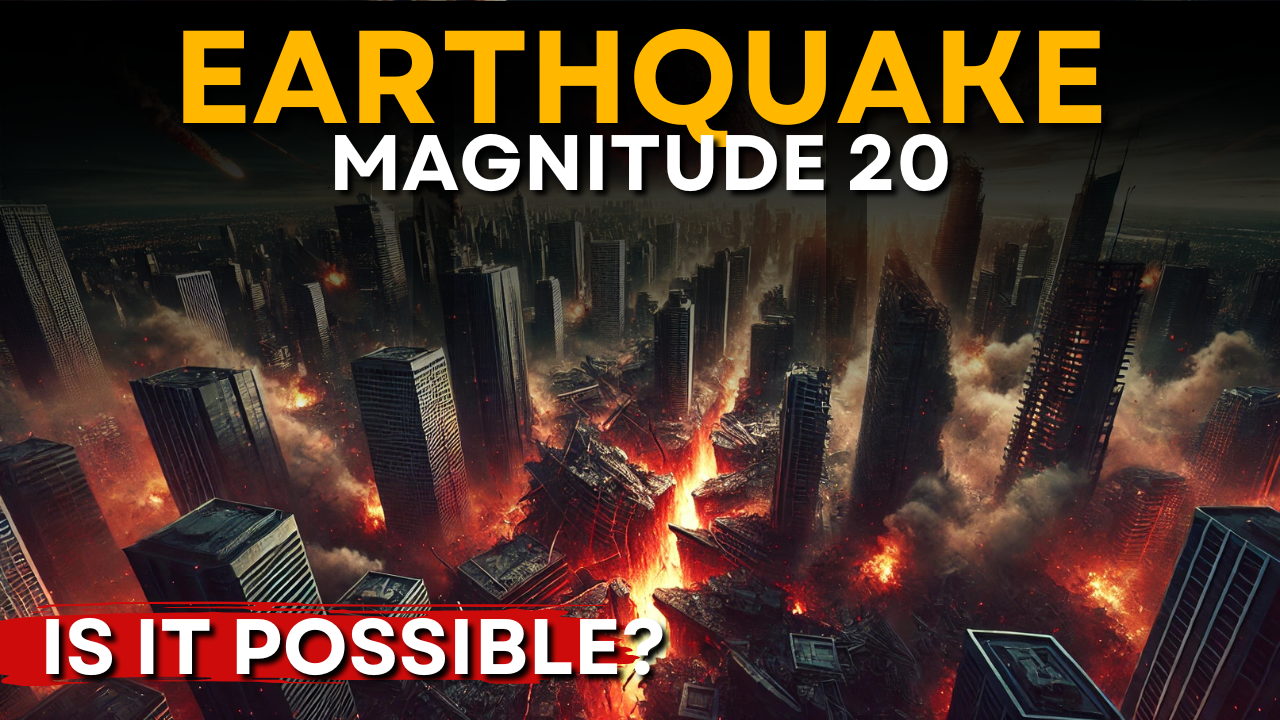
Have you ever wondered what suddenly makes the ground shake? Earthquakes are among the most impressive and destructive natural phenomena on the planet. They occur when there is a sudden shift in the tectonic plates that make up the Earth’s crust. Within seconds, the accumulated energy underground is released, causing the ground to vibrate and often resulting in significant damage to cities and communities.
The Richter scale, which measures earthquake magnitude, theoretically has no upper limit, but geologists estimate that anything beyond magnitude 10 is nearly impossible due to geological constraints. However, is it conceivable for us to experience a magnitude 20 earthquake?
The largest recorded earthquake to date reached a magnitude of 9.5, causing $5 billion in damages and leaving 2 million people homeless, not to mention the loss of lives. If a magnitude 20 earthquake were to occur, would there be time to evacuate?
To understand this, let’s explore the Richter scale. For each whole number increase, the intensity of an earthquake increases nearly 32 times. For example, a magnitude 2 tremor is 32 times more powerful than a magnitude 1 tremor. This exponential increase means that even a slight rise in magnitude results in an enormous difference in energy release.
Most earthquakes occur due to the movement of tectonic plates, which slide past each other in fault zones. When the accumulated pressure exceeds the friction holding the plates in place, a sudden slip releases massive amounts of energy in the form of seismic waves.
For a magnitude 10.5 earthquake to occur, a fault line approximately 80,000 km long would be required. Given that the Earth’s circumference is about 40,000 km, such an event is practically impossible. A magnitude 20 earthquake would be even more unlikely unless triggered by an external force—like a massive asteroid impact.
A seismic event of this magnitude would last much longer than any earthquake ever recorded, with tremors felt for at least five minutes and aftershocks continuing for hours. This could lead to massive tsunamis, volcanic eruptions, and subsequent earthquakes, potentially shattering the planet.
According to NASA, asteroid 2024 EOR 4, discovered in December 2024, is being closely monitored due to a small risk of collision with Earth on December 22, 2032. However, with an estimated size of only 90 meters, it wouldn’t cause a massive earthquake, just localized damage.
The real concern is asteroid Bennu, which has a slight chance of colliding with Earth on September 24, 2182. NASA has already sent a probe to collect samples from Bennu, and the data gathered is helping scientists develop potential impact mitigation strategies.
If a simple tectonic movement can devastate cities, imagine the catastrophic effects of an asteroid impact. Could this mark the end of humanity, or just another chapter in Earth’s long history? The universe still holds countless mysteries—some of which we may one day be forced to unravel.